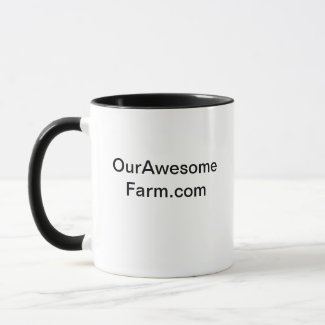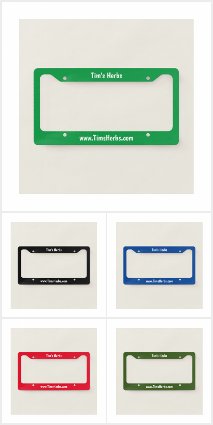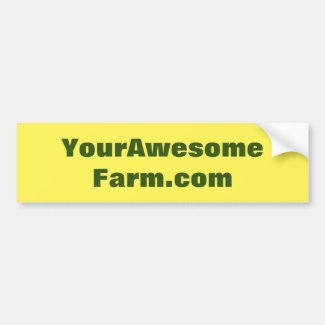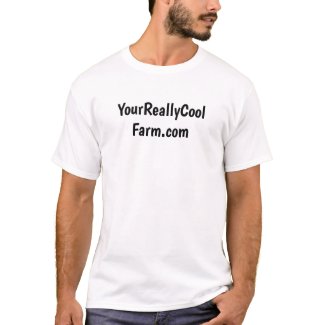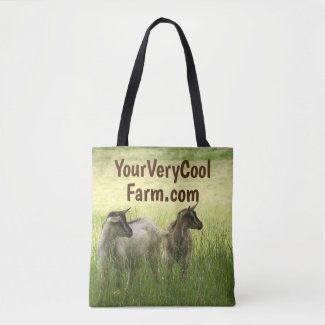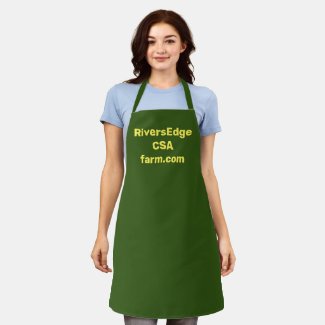Farmers, is YouTube for You?
© National Lilac Publishing, LLC by Barbara Berst Adams

As reported in the Seattle Times,
Morgan Gold and his wife Allison Ebrahumi Gold own a poultry farm in
Vermont. Though they earn some income from farmed products, they earn
$2500 to $4000 a month from advertising revenue generated by their
biweekly YouTube (YT) videos of their life on the farm, including fails and
mishaps. With other farmers on YouTube, the story is more the other way
around. They are full time producing farmers first. They gain most of
their income through farmed products or on-farm services such as agritourism, and their secondary YouTube project may bring in something like $50 to
$200 a month after many months or even years of gaining a large enough following. Or even only that amount per year. Their channels, though, can indirectly bring in more farm revenue by attracting new customers and keeping current customers loyal because of viewing their videos.
One
Forbes estimate suggested the higher performing YT channels can expect
to make about $5 for every 1000 video views. Note that ad views (ads
inserted within the farmer's videos by YouTube) are what pay, not just
views in general. YouTube doesn't monetize every single video on a
person's channel. The average of $5 is just an estimate of what 1000
video views might bring in for a channel that is up and running with ads
on some of its videos.
Setting up and maintaining a YouTube channel for one's farm might be beneficial to the bottom line, though, in various ways, especially if farmers seek a global audience vs. primarily a regional or local one. They may want to reach global customers if they sell online digital farming courses, non-perishable products sold online and mailed to distant locations, or to promote on-farm agritourism experiences that might interest global tourists visiting their area.
But I was recently contacted by a friend who just entered the infatuation stage of setting up a side hustle YouTube channel. It all looks simple and so promising from that 10,000 foot viewpoint. Just shoot a few videos from your smartphone in your spare time, set up a YouTube account during lunch, then wait for the revenue to come in. Eventually, your adoring fan base will carry the channel's exposure while you put maybe an hour or two a week into it. But let's look at some more grounded actualities to help decide if it's really a direction to aim for, and if so, some thoughts on succeeding once the infatuation stage subsides.
Quick YT farmer overview:
Farm videographers shoot and edit multiple videos (vids) of their farm and/or its products in an educational and/or entertaining way (not hard sell). They create an account on YouTube where they upload those vids to be published on the global public YouTube channel.
A main source of future YT income for some has been to eventually get advertising revenue from the videos once ads are inserted into them. People watch the videos in which a few ads are eventually included (put there by YouTube once the account holder reaches specific qualifications.) YouTube then shares ad revenue with account holders, paid for by merchants advertising on their videos, calculated by number of advertisement full views and partial views. YouTube can also place ads on videos that don't reach specific qualifications without the account holder's consent, but in that case, the account holder isn't given any cut of the revenue. So those seeking ad revenue need to aim for Partnership status explained more below under 'Qualifying for ads' in order to make sure revenue is shared.
The video content itself is never in info-mercial format, which turns viewers away. Instead, it can range from interesting and fun topics such as "Daily virtual tours of our farm,” or “Meet our new livestock guardian puppy -- follow us as we train him over the next 12 months.”
Lifestyle challenges:
One challenge the Golds and others report is having to keep coming up with attractive new content with eye-catching beginnings, intriguing middles and satisfying ends that will hold their audience’s attention, and in the Golds' case, twice a week, every week. Farmers involved in this type of project discover that shoots may need to be re-recorded if quality wasn’t good enough the first time, and they must be properly edited before uploading, which can take many hours. Sure, farming videos thrive on that down-home unkempt feel -- purposely not slick and professional. But the camera may bounce around too much. Mud might fling onto the center of the lens. Sound may be muffled or someone nearby may thoughtlessly utter a misogynist comment that the audio picks up. Videographers can quickly find that purposely looking endeeringly amateur in a way that viewers won't complain about and will return to again and again takes a lot of work.
And it really must be maintained throughout the year. YouTube audiences can drop quickly if there’s even a one month gap in publishing new content. Plus, some have found the constant search for content has changed how they view reality. It’s hard to assess each situation for what it really is when in the back of the mind are always the questions: How can I turn this into a story that satisfies my audience? How would this story conclude? What beginning hook should it have?
And, it can turn otherwise decent folks into thoughtless citizen paparazzi. Thinking of their children’s lives as possible audience entertainment, grabbing shots of their neighbors, strangers at ag fairs, and farm visitors, without regard to whether those people want to be recorded and uploaded on a worldwide public video channel to generate income for the recorder.
On the other hand, storytelling and videography come natural to some people. They find they enjoy gaining and pleasing a following. Would-be paparazzi in the making can instead be thoughtful. Recordings of others outside the family are put up only with their permission, which generates goodwill and opens doors to communication with people who may in fact help spread word about the channel if they like being included. Parents are sensitive to children who have to put up with school bullies seeing them online helping mom milk the goats or crying because of a slip on the ice. And, someone can monitor public YT comments to remove trolls who leave mean or threatening remarks about the family, the farming methods, or the crops they choose to raise.
Qualifying for ads:
To be considered for YouTube ad revenue income, videographers must meet various YouTube requirements including reaching more than 1000 YT subscribers to their own YouTube account, and generating 4000 public hours of viewing over 12 months. Once these and other requirements are met, including getting a Google Adsense account in good standing if they don't already have one, YouTube will review the account and decide whether to grant the status of YouTube Partner. So, it’s not automatic that time spent recording and uploading can eventually be monetized. But if it's granted, Partner status has been achieved, and ad revenue can be shared.
Partnership status must also be reached to allow links from YT back to your own website or your non-YouTube merchandise platforms such as Etsy or Zazzle.
Other forms of income with YouTube:
Farmers with YouTube channels can also earn ad revenue by personally plugging sponsoring businesses themselves within their videos. Telling viewers the particular vid is sponsored by, for example, an organic seed supplier, then sharing their admiration for the business and what their website is, with the sponsoring business paying the farmer directly for that plug. Honesty is not only important, but in some cases legally required, in these business transactions, and the farmer needs to point out to viewers they are a sponsor, rather than sneaking in plugs without that disclaimer and getting paid in secret, unless there's a legal loophole for this offered by YouTube itself.
Some channels with more than 30,000 subscribers can charge a membership fee for viewers to watch premium content not available to the general public.
YT Partners can sell merchandise from links below the video and in other areas of their channel. In order to have a viewable "merchandise shelf" with YouTube affiliated mechants such as Teespring, YTers must have more than 10,000 subscribers.
But other non-perishable farm product sales can be generated from a farm YT channel once Partnership status is reached and outside links are allowed, such as wool dryer balls from the farm’s sheep sold through the farm's Etsy store, by linking them in other areas of the channel besides the merchandise shelf.
Same with printed T-shirts with the farm logo or other farmer-created designs sold through platforms like Zazzle. And along with T-shirts, other farm-themed items such as hoodies, shoes, hats, mugs, posters and other print-on-demand merchandise can also be sold through platforms like Zazzle (which we ourselves have an account). Links to the farmer's Etsy, Zazzle or other online store can be added to YouTube video descriptions, channel tabs and throughout the video channel's public pages.
When YouTube viewers pay for Premium YT to eliminate all ads from all videos those viewers watch, some of that revenue is shared with YT Partners if those Premium viewers watch their videos, seeing as though it cuts off their regular ad revenue pathway.
Other indirect YouTube revenue comes from people seeing the videos and being enticed to seek out the farm’s own private website for direct farm purchases. Or, they simply generate farm brand promotion in hopes of expanding their customer base. Farmers in these two categories, unlike the Golds above, need to decide if ads on their YouTube vids is worth it. If they only upload a handful in hopes of leading people to their farm or for goodwill promotion, and don’t plan heavy YouTube time commitments, ad revenue may be impossible if Partnership isn’t achieved, or sparse even if it is.
And for the viewers, ads and interrupting sponsor plugs are annoying. A clean, beautiful video collection with no ads may stand a stronger chance of viewers staying with the video long enough to seek out the farm itself or remember its brand, rather than clicking away from irritating ads and not returning.
Wilcox Family Farms of Washington State raises pastured laying hens and sells the eggs regionally through various retail outlets. And even though they're not seeking a global audience, they have just a little over a dozen beautiful ad-free videos on YouTube (also on Facebook.) Viewers see clips of the farmers explaining their regenerative farming methods, green pasture, farm dogs, and happy hens strutting about in the open air. They witness how well-kept poultry houses are moved to new pasture every few days. In some, they even have the ability for others to comment turned off. Seeing such videos can do wonders for customers shopping for eggs and coming across the Wilcox brand in the grocery aisle. As of this writing, they are not YT Partners. They don't have direct links to their website from YouTube. But viewers can easily remember their name and look them up on their own. And they embed their YT videos onto their own websites, where viewers can choose to watch the videos while remaining on the private website and not being redirected back to YT. With Facebook, their videos are uploaded directly to Facebook -- bypassing YouTube. From there, viewers can click directly to Wilcox's own private farm business website, or to the Facebook farm business page.
They've successfully sold eggs for four generations, and actual farmed products are their bread and butter. Since they don't sell products globally, and since they put their efforts into their farmed products vs. online stories for ad revenue, YouTube is a very small part of their overall promotion.
They and others like them, though, have a relatively new concern. In the recent past, YouTube allowed account holders to decide to opt out of any ad content once they became Partners. And no ads were placed on non-Partner videos by default. It's only been quite recently that their new rule allows YT to put ads on any video they choose without the account holder's consent. And if they aren't Partners, as mentioned above, they won't share the ad revenue. Though this sounds concerning, YT only has so much ad inventory, and are less likely to insert them into videos of a channel with only a small number of total vids, and each with a small number of views. So smaller accounts may remain ad-free, though for now at least, they must be checked up on as this roll out continues.
Pushing for Partner status may have seemed like a waste of time for those who didn't ever want ads, at least not upfront. But the Partner status allows other forms of revenue, and if the Partner status continues to allow YT account holders to opt out of any ads, and gives them more control over where and how ads will appear if they do eventually choose them, it might be worth it for attractive ad-free videos. But as this new change is still being tested and rolled out, some YouTube mentors believe Partners will be able to still opt out of inserted ads, yet others aren't so sure, making Partner status valueless as a way to opt out of ad insertion.
If no opting out will ever be allowed on YT, even for Partners, those with a handful of quality videos which they want to remain ad-free may choose to simply move to another video hosting site such as Vimeo that doesn't even use ad revenue, but requires a monthly fee around $7 to $15 a month. Or, be content with just directly uploading their videos to their own pages on Facebook, and skip the YT adventure altogether.
About dependence on a huge centralized corporation.
Local and regional eco-farmers are often wary of too much centralized corporate control of their product. And with any giant global social media platform such as YouTube or Facebook, sweeping decisions can be made that derail the farmers direct and indirect income coming from that platform. Farmers who responsibly sold livestock to responsible buyers on Facebook had their ability to sell animals removed across the board. It came from a centralized decision to protect from inhumane puppy mills and the like without the ability to weed out the bad players and keep the humane eco-farmed animals available.
On YouTube, video monetization, and videos themselves can be shut down in an instant by YouTube at any time. One YouTuber shared videos of beautiful rural farm and farmhouse scenes, no talking, just natural sounds like birdsong, and his monetization was removed because of what he reported as a new rule that the account holder has to be seen or heard directly in a video to prove he or she is the actual author. Though the videos could stay up, the monetization was gone. He then uploaded a new video with him in it, trying to prove he was the author of his own past work. (Videos already uploaded to YouTube can't be edited, see more below.) He now waits, hoping his monetization on past videos will be returned.
And YT rules can change in an instant. After 11 months of pushing to reach that 30,000 subscriber mark to be able to charge membership fees for exclusive content, at the 29,999 subscriber, the required numbers may rise higher. Or the membership option removed altogether.
With all that, YTers remark that most removals of monetization and/or videos themselves are from blatant YT rule breaking that most farmers aren't involved in. Such as copyright infringement or impersonating someone else. Partnership may also not be allowed on channels that don't have advertiser friendly content, such as video warnings to viewers to never trust any ads on YouTube. But many YouTubing farmers maintain successful channels for as long as they desire, but definitely without betting the farm on YT.
To keep from putting all or most eggs forever in one YT basket, here are some possibilities:
One could aim for going for the big numbers with a YouTube venture, pushing full steam ahead during any spare time for that large audience in the millions and high ad revenue, but only as temporary, hoping it earns a one-time financial goal that will be replaced with actual farm crop and agritourism revenue before YT burnout takes over or other YT issues arise. No doubt the purchasing of services that optimize video reach, and other beyond beginner efforts would be needed. Then, if the goal is reached, reassessing. Possibly backing off from the time and lifestyle commitment it requires. A financial goal could be aiming for a down payment on farmland, a new greenhouse, or even finally topping off the last bit of the farm mortgage sooner. The aim here is not for YT to be a top revenue source forever, nor will an entire farm be lost if it fails, because other revenue sources would still be ongoing.
Or, one could plan to use it indefinitely but always as a bonus sideline source of promotion or revenue if it doesn't take away from the family and farm's wellbeing. Happy for a little extra, but not destroyed if it doesn’t work out or YT issues arise.
Farm YTers can also stay vigilant regarding social media industry changes where a corporate platform could merge with another, be sold to a less friendly new owner with new rules not to the farmer's liking, or even go bankrupt. Original pre-YT videos need to be safely stored elsewhere and ready in a manner they can be uploaded to competing replacement platforms (currently such as Wistia, Vimeo and JWPlayer -- though they may now or in the future not offer ad revenue monetization. Perhaps even Facebook Watch may become an attractive video monetization option instead). The disruption and hunt for new audiences and new monetization methods would be a challenge, but it might not have to completely end the video venture altogether if the coming problem was seen in time.
Tips on making quality videos
One of the scariest bits of advice regarding making successful videos is “find your own way.” Trial and error are good teachers. But there are still general tips to use as starting points.
- The obvious -- Regularly watch other farm YouTube channels and notice what you like and dislike as a viewer.
- Make sure the title you choose for the video is exactly what the video is about. Viewers are sick of click-bait, where the title promises something fabulous that’s not delivered. For example, don’t title your video “How to get 75 acres of good farmland for $40 total,” if the true story is your uncle gave you the title to his 75 acres of farmland for free during a lunch meeting where you picked up the tab for $40. The title suggests there’s a secret you know that others can emulate by following certain steps. It can cause bad will, angry comments, distrust and loss of future interested followers.
- After watching other videos for overall feel, zero in more on specific segments, such as how they start and end and where in the videos they place ads. Some have the same intro they start each video with, similar to a weekly prime time TV show's intro, with music, logo, and fast clips to introduce and brand the farmer’s channel. Others just start right in after a quick hello. Which do you prefer to watch as a viewer?
- After farmers have a large loyal fan base, they can sometimes get away
with starting a video with unrelated personal comments as long as it happens rarely. Such as, “So
sorry we missed the usual Tuesday upload. We had an emergency where an
elder family member passed away. We have a blog with more detail if
you’re interested. But now, let’s jump right back into this video’s
farming topic, which is where we find solace and what grandfather would
have wanted.” Your farming video’s topics will, of course, be about farm
related tragedies and mishaps at times. Viewers will come to like you
personally and want the real thing vs. trying to resemble Hollywood false perfection (see below). But personal stories unrelated to the farm that affect
your viewers (they were eagerly awaiting a Tuesday upload and in
never came… and they deserve an explanation and assurance it won't keep happening) need to be quick with
reference to more detail elsewhere if the farmers believe they have viewers who might like
to know.
- Do avoid the personal unrelated ramblings where they aren’t necessary for the well-being of your viewers and especially when first trying to build up a following. “Hey fans! It’s Susie here! I know I promised this video would be about planting peppermint, but it’s been a crazy busy week! First off, my boyfriend… and then when I was at the grocery store… plus, I was so excited to be invited to this party…Yeah um so now about peppermint, hey WHOA! Did you hear that siren that just went by? Reminds me of a joke I just can’t resist telling you...” Was that video only for her mother who adores everything she does and says simply because she exists? It isn’t going to gain farm channel followers. Some people stiffen and clam up in front of a camera, others get giddy and overly chatty at the prospect of lots of attention from as-yet-unseen fans. Try to avoid both extremes.
- As
long as the clips are on topic and aren't rambling, most YT video mentors believe reality’s imperfection is far better than faked
perfection or reading from a script. Followers come to learn or virtually experience farmlife,
not other areas of your personal life, but they will come to like you
personally. If comfortable, show the tears when the favorite old barn
cat unexpectedly passes away. Show the leaking bucket from your leaving it out to rust, or the eggs that spilled and cracked when the wind blew over the gathering basket. As long as it's related enough to the title of that particular farm video.
_________
No need to wait for online farm promotion... reach potential new customers everywhere you wear T-shirts! Guys and gals:
Testing out the video world is also a major player in making quality videos. If you are at entry level, you may want to try out a bit of farm videoing itself without YouTube before investing any money and time into video equipment and a YouTube channel. To help with motivation, give the practice videos a tangible value towards a goal, such as sending a video out to friends and family once a month, or in a monthly e-newsletter you’ve already begun.
Or try to meet the goal of one video per month on a Facebook farm page instead, if that platform is already up and running and familiar to you. These would be videos you’ve taken with your smartphone or your dslr camera that you upload into emails or Facebook in the same manner you’d upload a still photo to those platforms.
Though Facebook has also developed Facebook Watch, a larger video-sharing platform to compete in some ways with YouTube that, too, has requirements for videos to be accepted, that’s not what we’re talking about here. Rather, just uploading casual practice videos to your own personal or farm business Facebook page to get a feel for it without any more requirements from the platform than for any still photo or image you'd upload on your own pages.
These practices can:
- Get you used to being in front of and behind the camera.
- Notice when wind affects the sound too much and how to handle that.
- Notice if you’re talking too fast, mumbling, or the sound is too soft overall.
- Allow you to try out various free versions of video editing services such as OpenShot (we haven't tried this, so not endorsing it here) and play around with clips. Discover how to add overlays, do slow motion, and add background music (be
careful with music. Many viewers dislike it.)
- Allow you to experiment and fix issues if the camera is it bouncing and distracting.
Then
if you think you might get the hang of video shooting and editing, set up a free YouTube
channel and look around inside your account. You’ll find features that
excite you, as well as features that concern you. Such as that you’re
not allowed to edit any YT videos once uploaded and published as mentioned
above. You can
certainly take videos down and replace them with new ones. But if those deleted videos had viewing hours, view counts, and comments you wanted
to keep (for example, to count towards YouTube Partnership), even if some areas of YT maintain past view numbers from deleted vids, those
numbers can still in some ways be negatively affected by deleting.
So! One great societal benefit of farmers uploading their own videos of their own farm stories, is that the true farming story isn't dependent on Hollywood stereotypes or the whims of national media. The Gold's viewers appreciate the sometimes harsh reality of farming. And Wilcox Farms' eggs stand out from other brands that simply print terms such as grassfed eggs on their egg cartons, with no down to earth real life online story customers can trust.
But
farmers are in business. They're not unpaid social workers. They need to use
what positively affects the bottom line within the time and labor
constraints they have. And many farmers prefer to spend the majority of their time working on the physical ground of their farms, helping them flourish, using quicker, simpler online promotion such as still photos on easier social media platforms. Local groups may even form to handle YT videos of regional farmers who want a say in what goes up online, but would rather an experienced group do the heaviest work. It's the knowing of where one chooses to spend time, that counts.
UPDATE: Since the above article was written, we've come across more about the idea of "evergreen" videos. Please enjoy the video above which explains how these can work on your farm for more YouTube channel revenue as well as a more pleasant experience of less time spent always chasing the next exciting new video idea that quickly dates itself and loses the bulk of its audience too soon.


